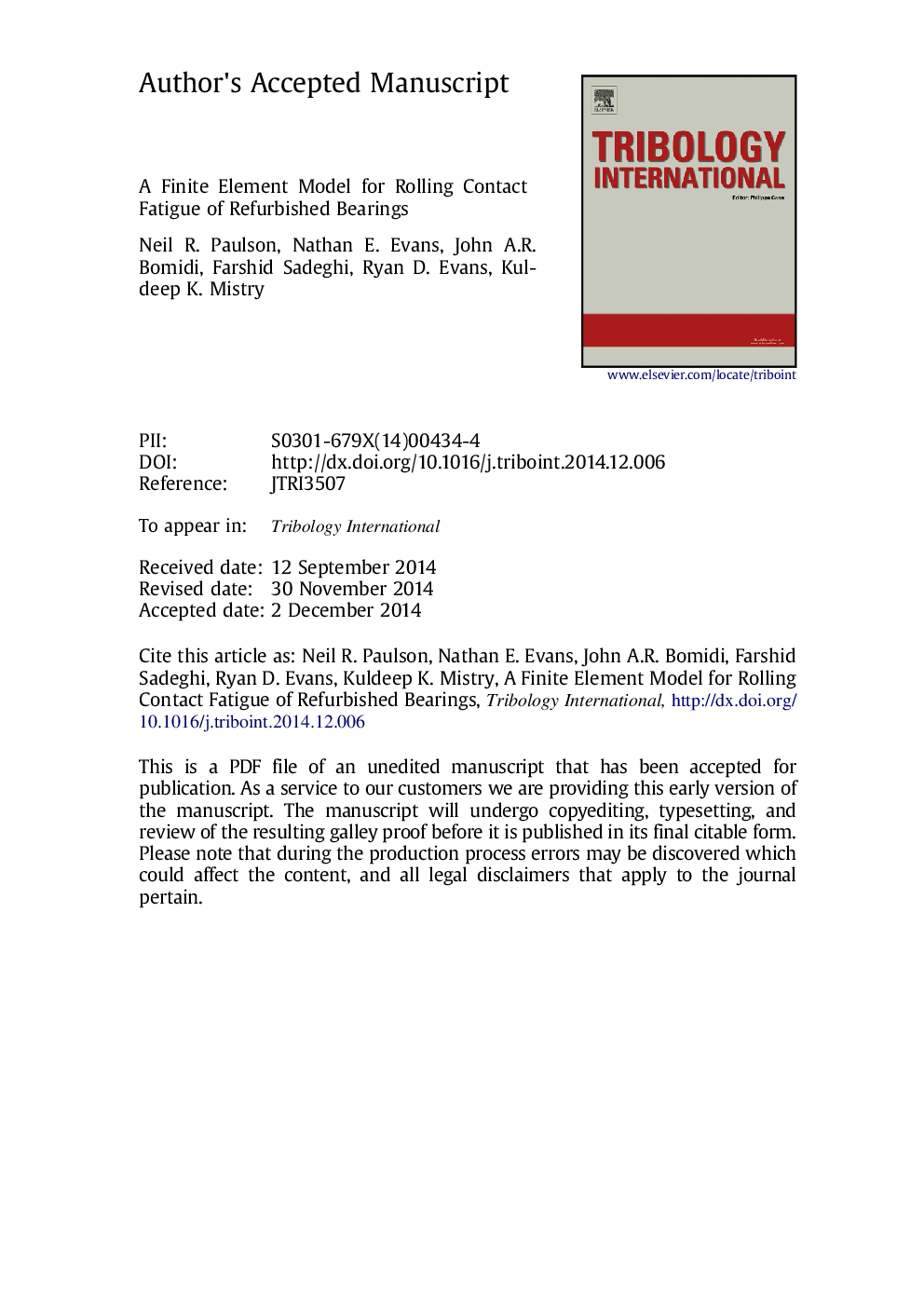| Article ID | Journal | Published Year | Pages | File Type |
|---|---|---|---|---|
| 614561 | Tribology International | 2015 | 22 Pages |
Abstract
Bearing refurbishing has become a popular method of extending the life of rolling element bearings. In the refurbishing process the raceways of the bearing may be ground to remove any surface damage prior to repolishing and reassembly with larger sized rolling elements. In the current study a continuum damage mechanics finite element model was developed to quantify the damage in original and refurbished bearings. After calculating the damage accumulation for a set number of contact cycles with the original bearing geometry, refurbishing is simulated by removing a layer of the original surface. The refurbished microstructural model is then subjected to additional computational contact cycles until a fatigue crack reaches the surface, signifying failure. This model preserves the fatigue damage accumulated prior to refurbishing and evaluates its influence on the refurbished bearing fatigue life. All refurbished bearing surfaces showed a significant amount of life after refurbishing with L10 lives from the point of refurbishment, varying from 20% to 94% of the original L10 life. The results indicate that the remaining life of the refurbished bearing population is inversely related to the time before refurbishing and is proportional to the depth of the regrinding. Results obtained from this investigation are in good agreement when compared to the Lundberg-Palmgren bearing life equation modified for analyzing the life of a refurbished bearing.
Related Topics
Physical Sciences and Engineering
Chemical Engineering
Colloid and Surface Chemistry
Authors
Neil R. Paulson, Nathan E. Evans, John A.R. Bomidi, Farshid Sadeghi, Ryan D. Evans, Kuldeep K. Mistry,
